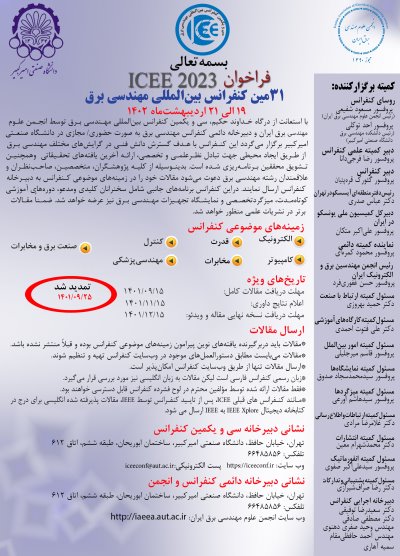0% Complete

نویسندگان :
کلمات کلیدی :
چکیده :
لیست مقالات بایگانی شده
Mahtab Seyyedi - Ebrahim Pirmoradi - Turaj Amraee
Negar Baradar Alizadeh - Mahmoud Momtazpour
Sadegh Sarjoughian - Mohsen Maddahali - Ahmad Bakhtafrouz
سید محمد مهدی جعفری - صمد شیخایی
Mohammadamin Aalami - Ebrahim Babaei - Saeid Ghassem Zadeh
Fatemeh Gharebaghi asl - Sepideh Hajipour Sardouie
Reza Behkam - Hossein Karami - Mahdi Salay Naderi - Gevork Gharehpetian
Saman Armand - Jalal Heidary - Eli Shirazi
Fatemeh Mandegari - Leila Ahmadi - Amir Ahmad Shishegar




